
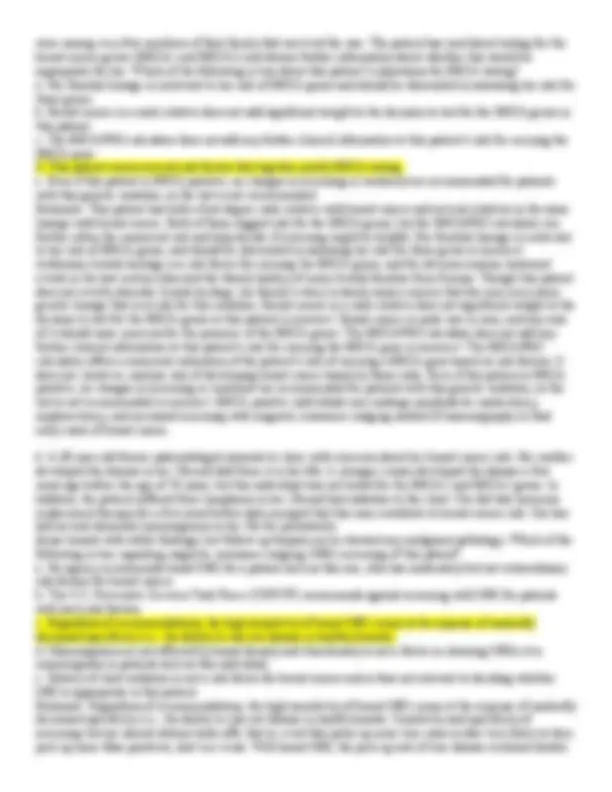

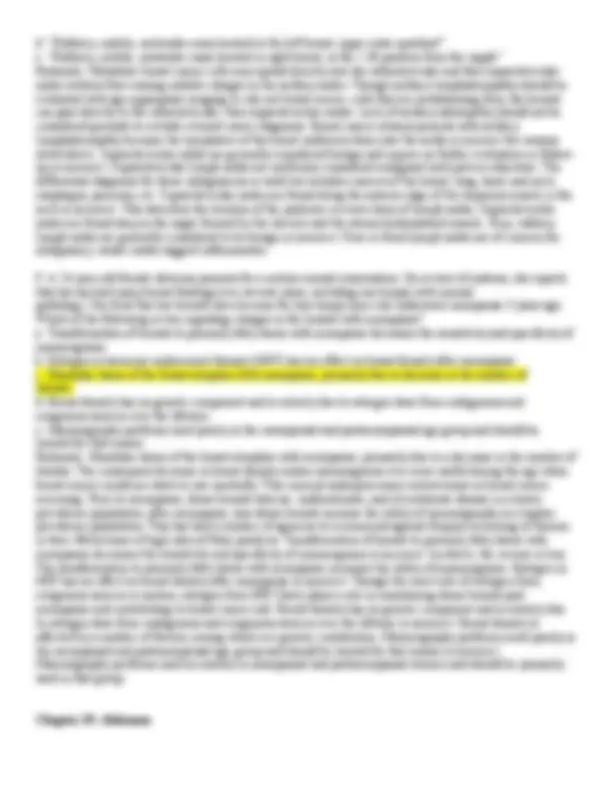
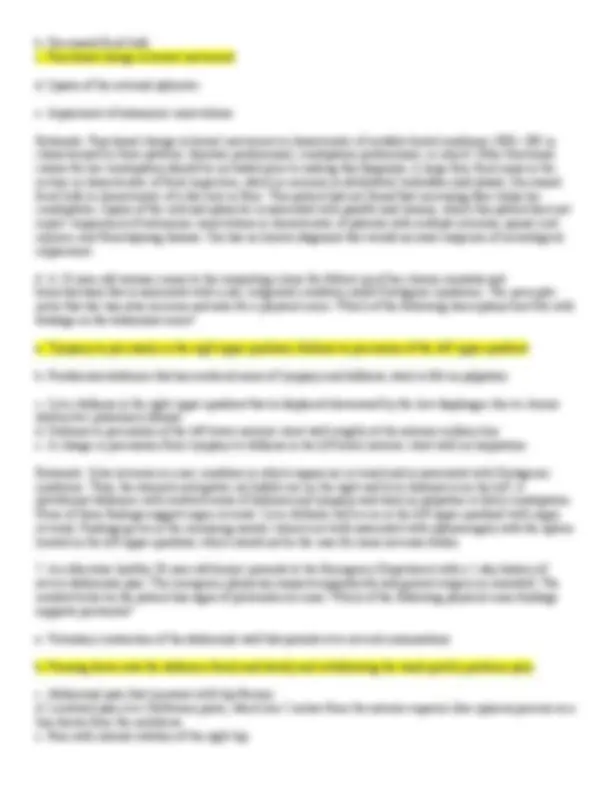
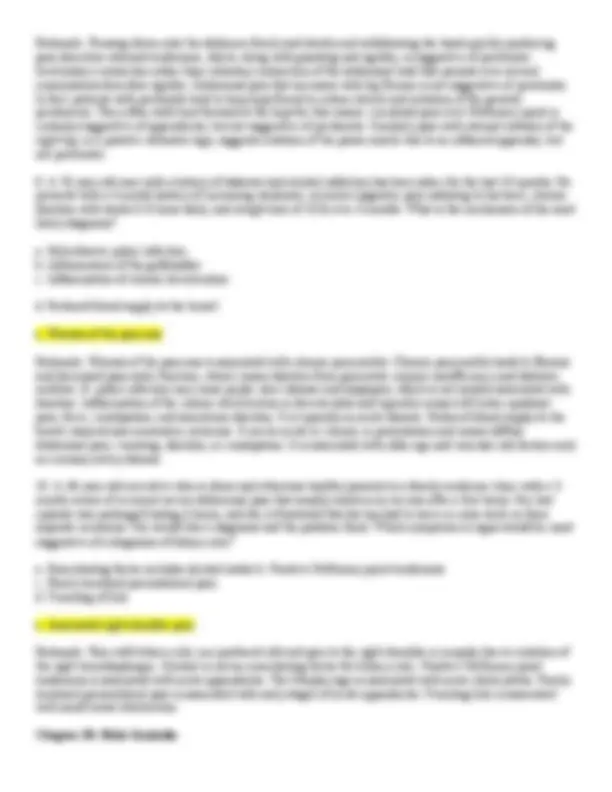

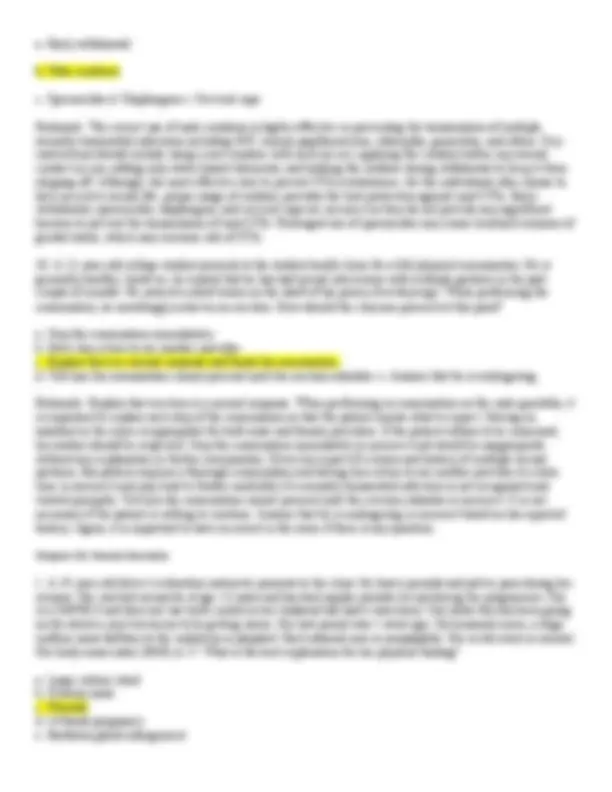
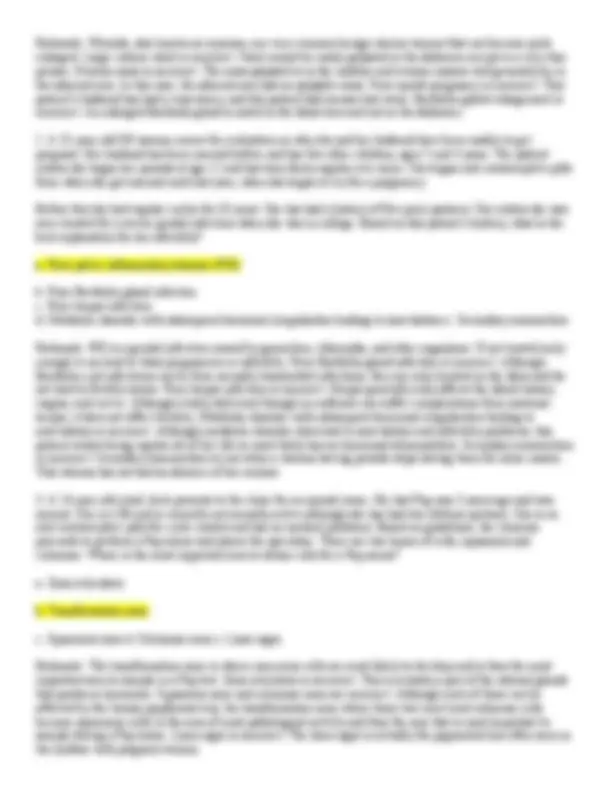
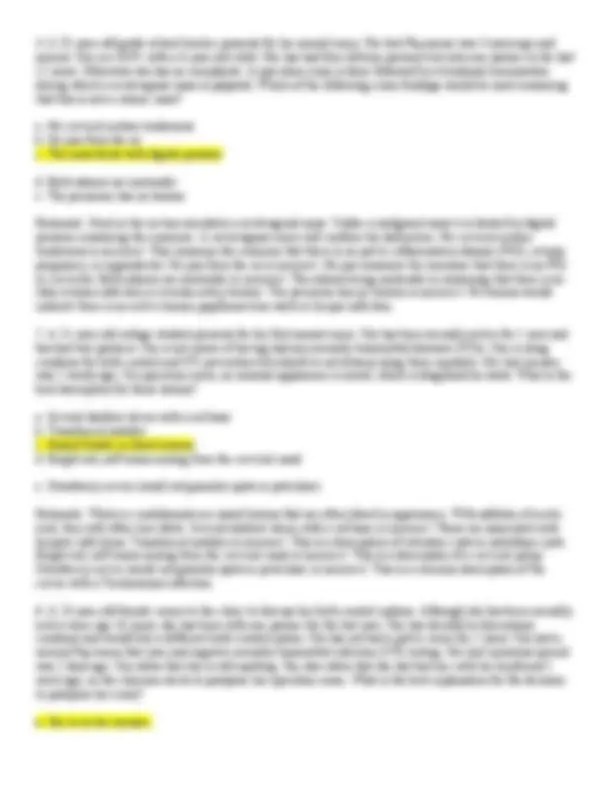

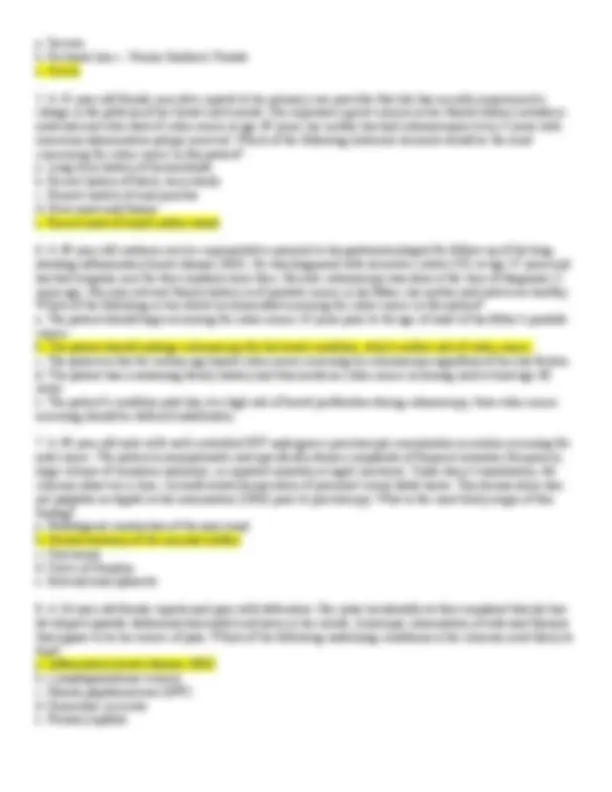
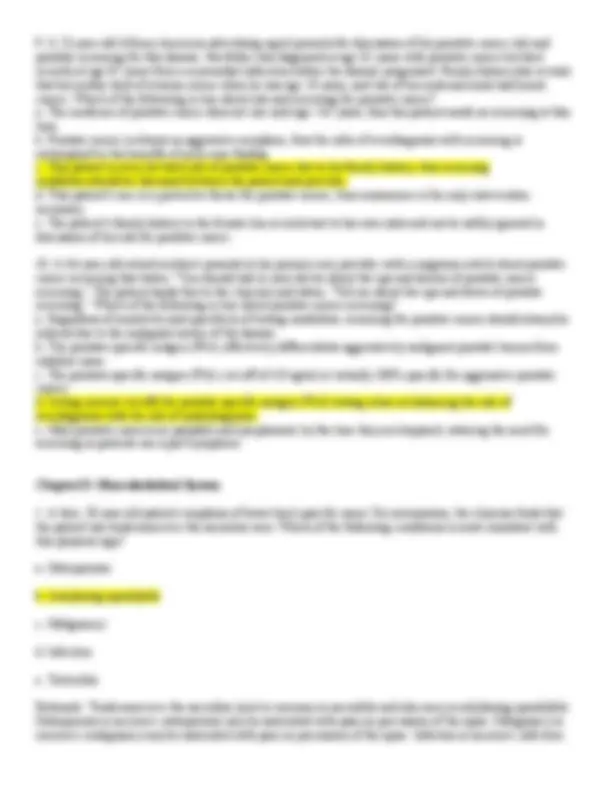
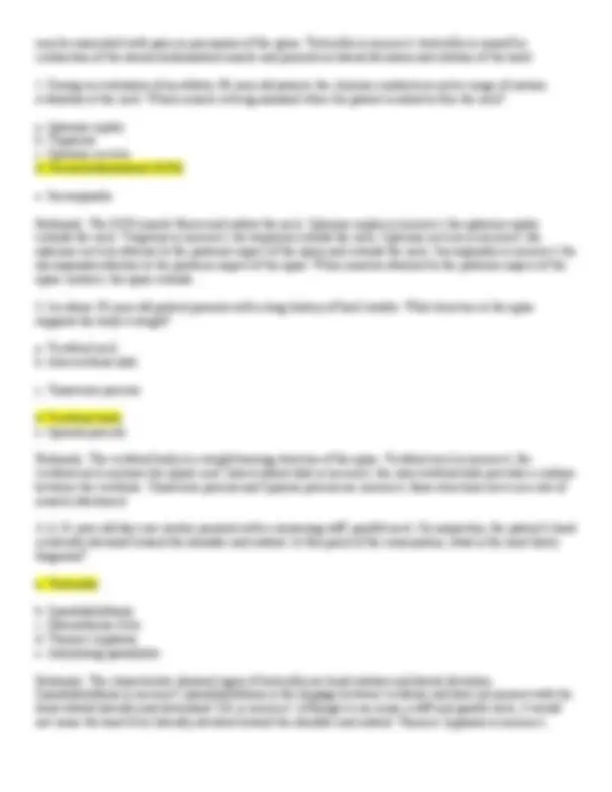







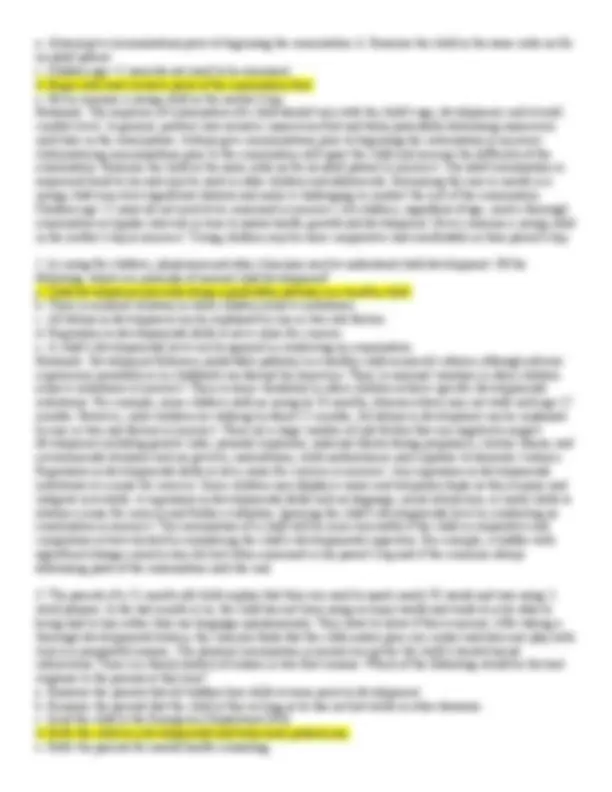


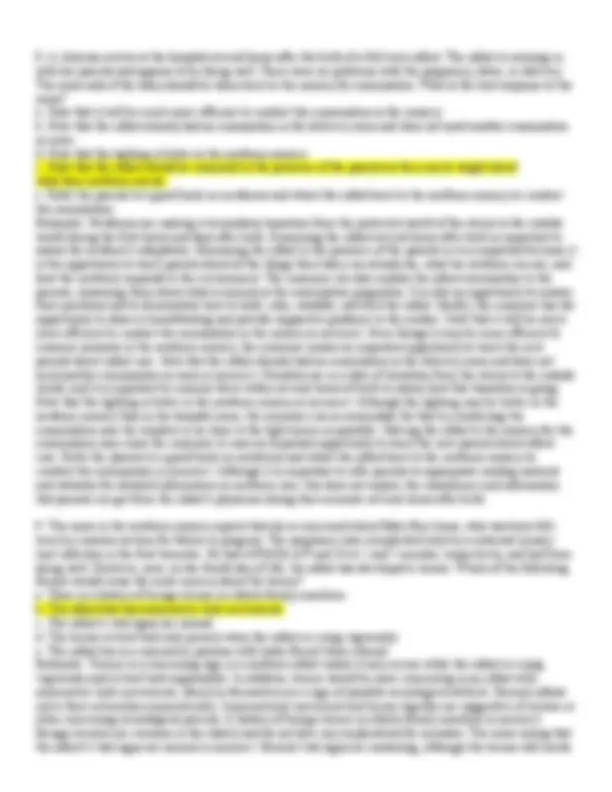


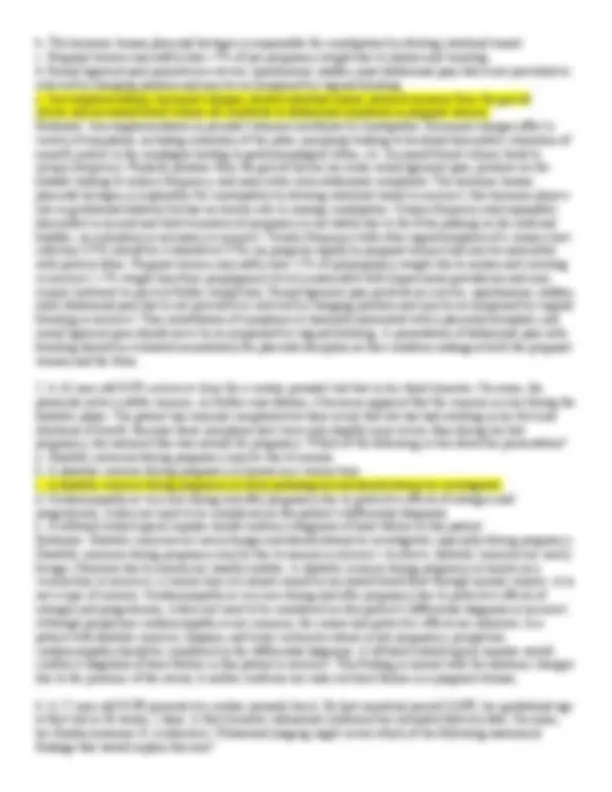



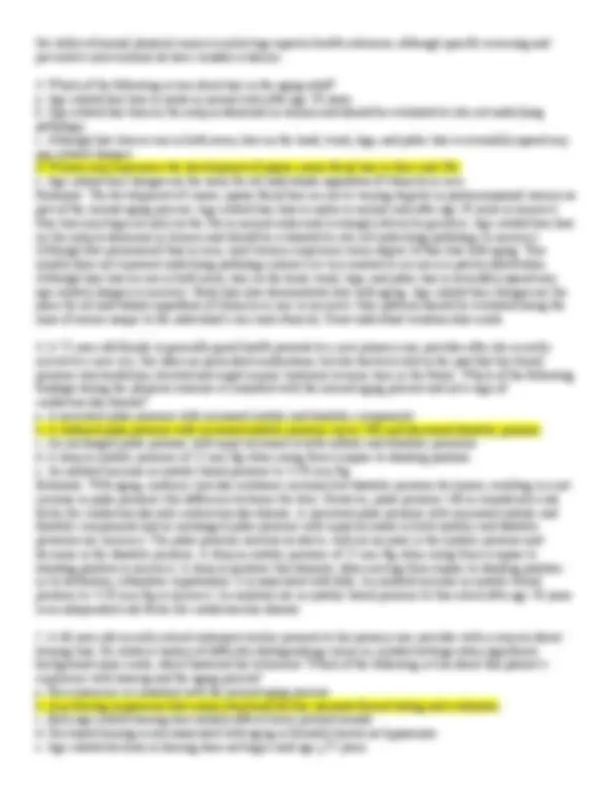
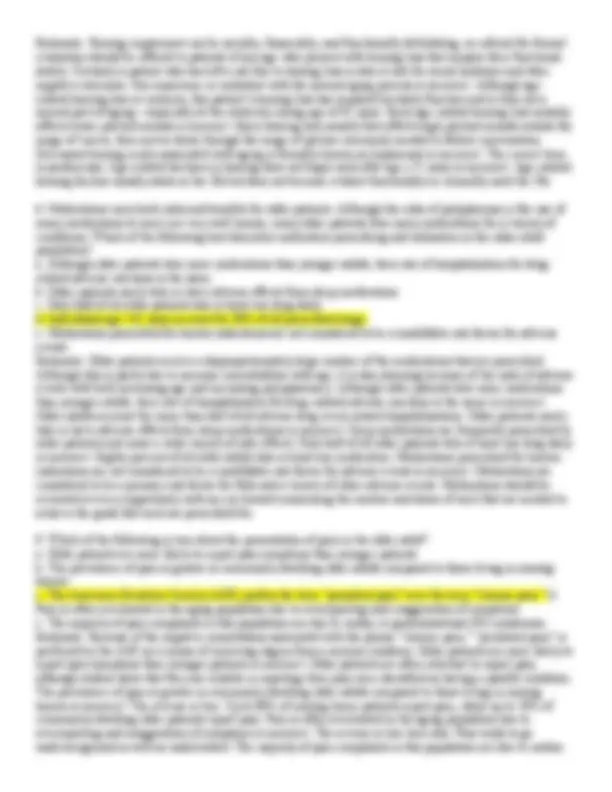
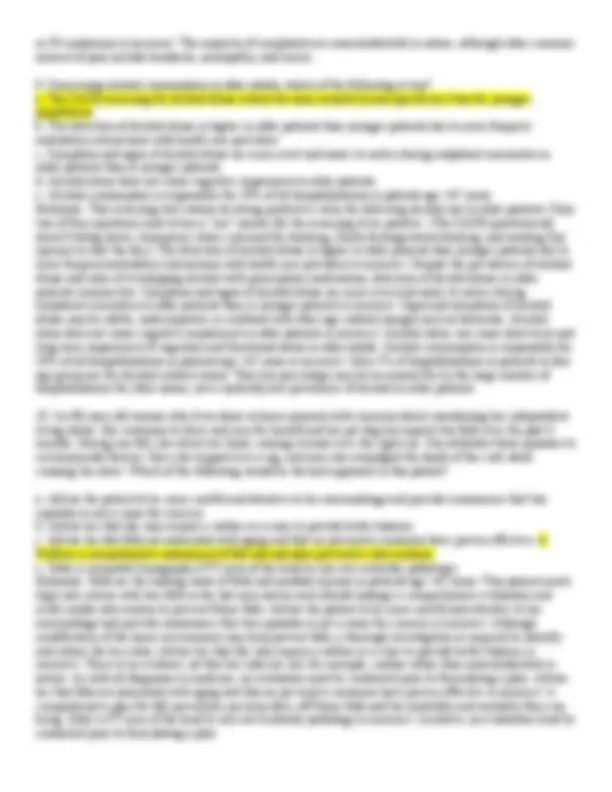



Study with the several resources on Docsity

Earn points by helping other students or get them with a premium plan


Prepare for your exams
Study with the several resources on Docsity

Earn points to download
Earn points by helping other students or get them with a premium plan
Community
Ask the community for help and clear up your study doubts
Discover the best universities in your country according to Docsity users
Free resources
Download our free guides on studying techniques, anxiety management strategies, and thesis advice from Docsity tutors
Chapter 18: Breast and Axillae 1. A 44-year-old female mathematician presents to clinic with a complaint of a mass in the right breast. Her partner noticed this mass 2 days ago, and the patient feels guilty because she has only had one mammogram and does not engage in breast self-examination (BSE) on any regular basis. She has no family history of breast cancer, and her prior mammogram was ordered as a routine screening test at age 43 years after a brief discussion with her primary care provider. After a thorough investigation reveals a benign cyst, what advice should be given to this patient about screening for breast cancer in her age group? a. BSE is well evidenced, and all recommending agencies agree that it should be taught and reinforced. b. Clinical breast examination (CBE) is superior to BSE and should be a routine part of annual examinations starting at age 30 years. c. This patient was in compliance with the U.S. Preventive Services Task Force (USPSTF)
Typology: Quizzes
1 / 42

This page cannot be seen from the preview
Don't miss anything!



































Chapter 18: Breast and Axillae
few months. On examination, she is able to express a small amount of discharge, which is sent to the laboratory and found to be consistent with breast milk but without any signs of blood or pus. Screening laboratories are also sent, which reveal a normal blood count, metabolic panel, thyroid-stimulating hormone, and human chorionic gonadotropin (HCG) level. Further laboratories are still pending. Which of the following is the most likely diagnosis? a. Mastitis b. Ductal carcinoma in situ c. Paget disease of the breast d. Occult pregnancy e. Prolactinoma Rationale: Prolactinomas are pituitary tumors that secrete prolactin, which causes the production of breast milk and can suppress menstruation. Mastitis is incorrect. Mastitis is a breast infection that is typically painful and characterized by a focal area of redness and tenderness in one breast. Ductal carcinoma in situ is incorrect. While nipple discharge should raise suspicion for breast cancer, in this case the discharge is neither bloody nor purulent, and it is notably bilateral. A prudent provider may still order a mammogram and/or ultrasound, but the answer is unlikely to be breast cancer. Paget disease of the breast is incorrect. This condition may present with nipple discharge, but it is usually bloody. Occult pregnancy is incorrect. This patient has a negative HCG test, which is the standard hormonal laboratory examination used to determine pregnancy in both urine and serum tests.
that of mammograms, but at the expense of double the false positives. No agency recommends breast MRI for a patient such as this one, who has moderately but not extraordinary risk factors for breast cancer is incorrect. This patient presents with an extraordinary risk profile, including strong family history of breast cancer (suggestive of BRCA linkage to disease but without clear diagnosis), history of chest radiation, and dense breasts requiring prior biopsies to rule out malignancy. She meets the American Cancer Society (ACS) criteria for annual breast MRI, though the USPSTF does not agree that the evidence exists to support this recommendation. The USPSTF recommends against screening with MRI for patients with such risk factors is incorrect. The USPSTF, recognizing the limited data available on this screening test, states that there is insufficient evidence to state one way or another whether this test is appropriate for high-risk patients. Mammograms are not affected by breast density and thus density is not a factor in choosing MRIs over mammograms in patients such as this individual is incorrect. Breast density is both a risk factor for breast cancer and a factor that hampers effective screening with mammograms; per the ACS, it may be criteria to screen by MRI. History of chest radiation is not a risk factor for breast cancer and is thus not relevant to deciding whether MRI is appropriate in this patient is incorrect. Chest radiation between the ages of 10 and 30 years confers high risk of later breast cancer; per the ACS, this risk is sufficient to warrant screening by MRI.
d. “Rubbery, mobile, nontender mass located in the left breast, upper outer quadrant” e. “Rubbery, mobile, nontender mass located in right breast, in the 1:30 position from the nipple” Rationale: Metastatic breast cancer cells may spread directly into the infraclavicular and then supraclavicular nodes without first causing notable changes in the axillary nodes. Though axillary lymphadenopathy should be evaluated with age-appropriate imaging to rule out breast cancer, cells that are metastasizing from the breasts can pass directly to the infraclavicular, then supraclavicular nodes. Lack of axillary adenopathy should not be considered grounds to exclude a breast cancer diagnosis. Breast cancer always presents with axillary lymphadenopathy because the lymphatics of the breast uniformly drain into the axilla is incorrect for reasons noted above. Supraclavicular nodes are generally considered benign and require no further evaluation or follow- up is incorrect. Supraclavicular lymph nodes are uniformly considered malignant until proven otherwise. The differential diagnosis for these malignancies is wide but includes cancers of the breast, lung, head, and neck, esophagus, pancreas, etc. Supraclavicular nodes are found along the anterior edge of the trapezius muscle in the neck is incorrect. This describes the location of the posterior cervical chain of lymph nodes. Supraclavicular nodes are found deep in the angle formed by the clavicle and the sternocleidomastoid muscle. Firm, rubbery lymph nodes are generally considered to be benign is incorrect. Firm or fixed lymph nodes are of concern for malignancy; tender nodes suggest inflammation.
a. Female gender b. History of smoking c. Underweight d. Family history of ruptured aneurysm e. Hypertension Rationale: History of smoking is her most significant risk factor for an AAA. Male gender, not female gender, is considered as risk factor. Underweight is not a risk factor for AAA. Family history of ruptured aneurysm is vague and could be a cerebral aneurysm. Further, her family history is in a first-degree cousin not a first-degree relative (biologic parents, siblings, and children). Hypertension could contribute to atherosclerosis, which is a risk factor. Further, a diagnosis of hypertension is not based on one elevated blood pressure reading.
b. Decreased fecal bulk c. Functional change in bowel movement d. Spasm of the external sphincter e. Impairment of autonomic innervations Rationale: Functional change in bowel movement is characteristic of irritable bowel syndrome (IBS). IBS is characterized by three patterns: diarrhea predominant, constipation predominant, or mixed. Other functional causes for her constipation should be excluded prior to making this diagnosis. A large firm fecal mass in the rectum is characteristic of fecal impaction, which is common in debilitated, bedridden individuals. Decreased fecal bulk is characteristic of a diet low in fiber. This patient had not found that increasing fiber helps her constipation. Spasm of the external sphincter is associated with painful anal lesions, which this patient does not report. Impairment of autonomic innervations is characteristic of patients with multiple sclerosis, spinal cord injuries, and Hirschsprung disease. She has no known diagnosis that would increase suspicion of neurological impairment.
is secreted from the hypothalamus and stimulates pituitary secretion of LH and FSH. LH is incorrect as it is secreted from the pituitary gland and stimulates the synthesis of testosterone. Testosterone is incorrect as it is synthesized by Leydig cells in the testes and is responsible for multiple other processes such as pubertal growth of male genitalia, secondary sex characteristics, and muscular growth, to name a few.
a. Early withdrawal b. Male condoms c. Spermicides d. Diaphragms e. Cervical caps Rationale: The correct use of male condoms is highly effective in preventing the transmission of multiple sexually transmitted infections including HIV, human papillomavirus, chlamydia, gonorrhea, and others. Key instructions should include using a new condom with each sex act, applying the condom before any sexual contact occurs, adding only water-based lubricants, and holding the condom during withdrawal to keep it from slipping off. Although, the most effective way to prevent STIs is abstinence, for the individuals who choose to have an active sexual life, proper usage of condom provides the best protection against most STIs. Early withdrawal, spermicides, diaphragms, and cervical caps are incorrect as they do not provide any significant barriers to prevent the transmission of most STIs. Prolonged use of spermicides may cause localized erosions of genital tissue, which may increase risk of STIs.
Rationale: Fibroids, also known as myomas, are very common benign uterine tumors that can become quite enlarged. Large colonic stool is incorrect. Stool cannot be easily palpated in the abdomen except in a very thin person. Ovarian mass is incorrect. The mass palpated is in the midline and ovarian masses will generally be in the adnexal area. In this case, the adnexal area had no palpable mass. Four-month pregnancy is incorrect. This patient’s husband has had a vasectomy, and this patient had menses last week. Bartholin gland enlargement is incorrect. An enlarged Bartholin gland is noted in the labial area and not in the abdomen.
b. She has only one current partner and does not need STI testing c. She had a normal Pap smear within the last 3 years. d. She should not be sexually active. e. She has been using condoms. Rationale: For best results with either a Pap smear or STI testing it is best to not have the patient menstruating. On conventional Pap smears, blood masks the cytology. For STI testing, the vaginal sample results are not always valid. Some practices do use urine STI testing but this is not yet universally available. She has only one current partner and does not need STI testing is incorrect. Until the age of 25 years, high-risk individuals with a history of several partners are still tested yearly. She had a normal Pap smear within the last 3 years is incorrect. Although she does not need a Pap smear at this time, she still needs STI testing. She should not be sexually active is incorrect. This is a personal judgment of the provider and should not be involved in decision making for the patient’s care. She has been using condoms is incorrect. As long as a patient has not used a condom for the last 48 hours, there is no need to postpone a speculum exam due to general condom usage.
d. Replace the speculum with a plastic one with a better light source. e. Discontinue the speculum exam and treat empirically. Rationale: The first maneuver when the cervix is not easily within view is to switch the angle of how the speculum is being inserted. Replace the speculum with a larger one (large Graves) is incorrect. In some patients, this could be done after repositioning the original speculum. In this patient, a thin G0, a larger speculum would not be helpful. Withdraw the speculum and do a bimanual exam to find the cervix is incorrect. Although this can be helpful to find a cervix, it is not the next maneuver that would be done. Replace the speculum with a plastic one with a better light source is incorrect. Although this can also be done as a later maneuver it is not the next one done to visualize the cervix. Discontinue the speculum exam and treat empirically is incorrect. The clinician would not stop trying to visualize the cervix after one failed attempt. In this case, also it is unknown if this discharge is bacterial vaginosis, Trichomonas, a yeast infection, or some other sexually transmitted infection.
a. Sacrum b. Pectinate line c. Uterine fundus d. Prostat e. Cervix